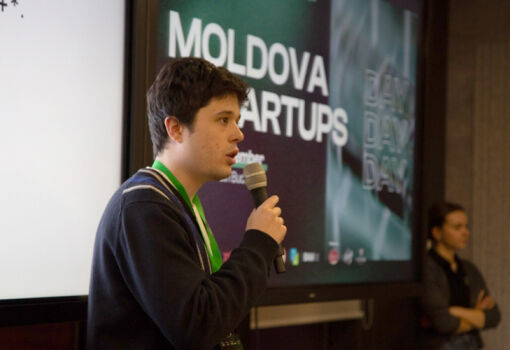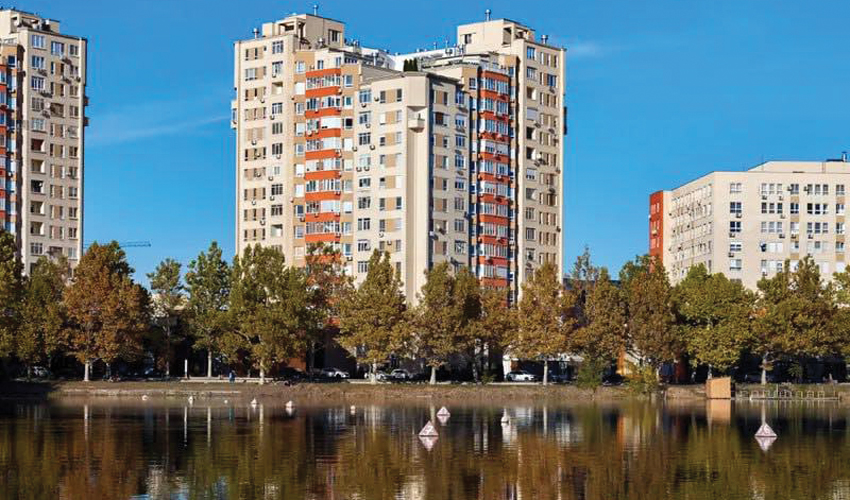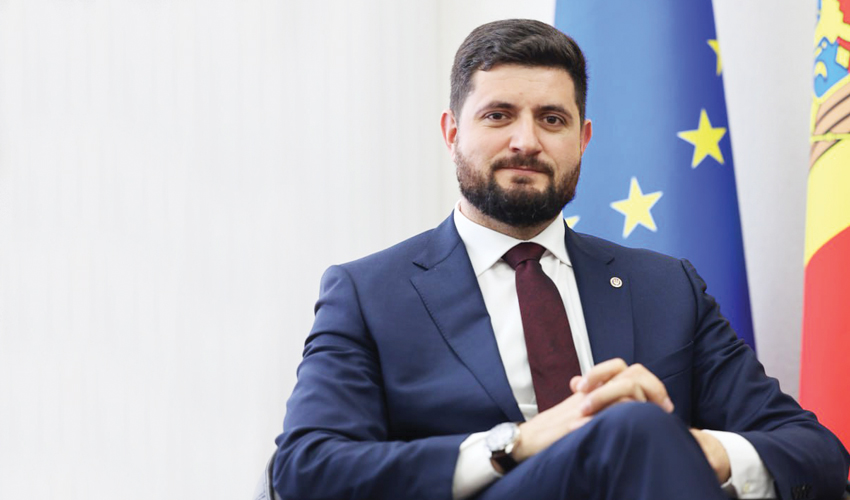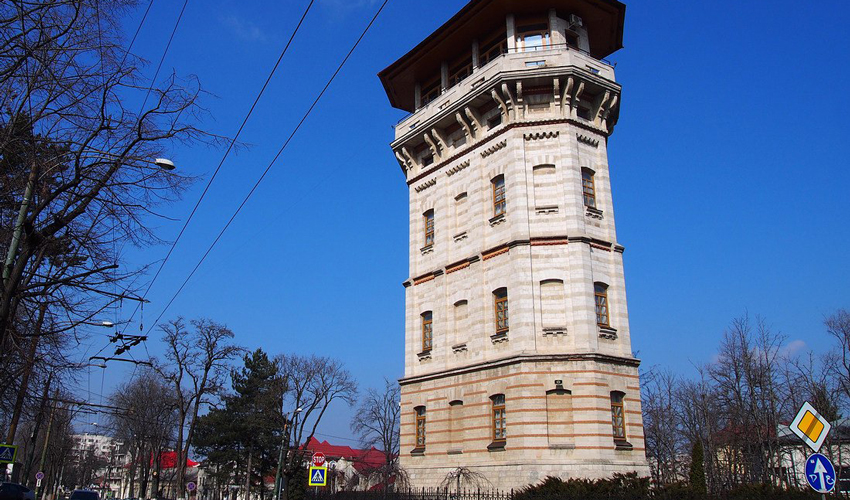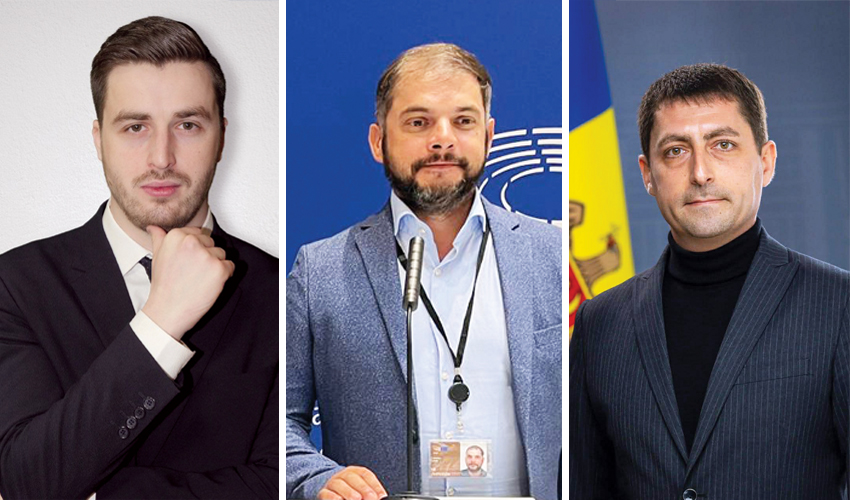
InfoMarket news agency decided that this is a good occasion to remind how the market for mobile services in the country has developed.
The beginning: canceled exclusive
The first GSM mobile operator in the country was Voxtel (France Telecom) – in green corporate color it started providing cellular services in October 1998. The technologies were new and expensive, so it was difficult to call this service affordable. For example, one of the packages cost $40 per month with per-minute billing. That is, you could make a maximum of 40 calls within the package.
By issuing a license to Voxtel, the government granted it an exclusive in this market for 15 years. It was supposed to be a monopoly until 2013. Voxtel paid $8 million for the license and another $1.68 million for additional frequencies.
However, anti-monopoly legislation (and another change of government) allowed to issue an additional license to another operator “to ensure competition on the market”. Moldcell also paid $8 million for the license.
“You waited for us – we came!” – under this slogan, at the end of April 2000, Moldcell (TeliaSonera) entered the market in orange corporate color with a logo in the form of a deer.
Of course, there was a scandal, and more than one. Voxtel tried to protect its exclusive license, including at the interstate level, because exclusivity was the condition of huge investments for Moldova at that time. It did not work. Another scandal was related to the fact that Moldcell at points of sale gave out minimum packages of SIM cards for free (you could even choose the number from a small list), but … in exchange for a paper copy of a Voxtel SIM card. That is, it attracted the existing customers of the competitor, because cell phones were not cheap yet, and if there was a copy of Voxtel SIM-card, it meant that the subscriber already had a cell phone. This practice caused resonance and controversy, including at the level of regulatory bodies and among journalists, as it was considered as unethical competition. But from the point of view of market entry strategy, it turned out to be effective: Moldcell quickly occupied its niche and intensified the competition. As a result, prices on the market decreased and the quality of communication improved.
But the most important thing that the market got in 2000, besides the reduction of prices for packages, was a five-second tariffication and a new service – SMS. Thus began a rather tough competition between the two operators. Voxtel accelerated investments, including the coverage of the whole territory of Moldova with its network, and Moldcell had to catch up with the one and a half years, by which the competitor was ahead of it.
Competition and technologies
In 2001, Moldcell changed its logo from a deer to a bird in the form of a tick in a notebook. At that time journalists thought that Moldcell decided to “become more serious”. Although the tendencies of changing company logos also have their own fashion, depending on the time and country.
It is interesting that when Voxtel rebranded in 2007 and became Orange, for almost four years the corporate colors of both Moldovan mobile operators were almost the same – orange. This misled the consumer. In 2010, Moldcell rebranded again and changed the color to purple, using the same logo of all companies in different countries owned by TeliaSonera.
In order to conquer a market where a large operator is already operating, Moldcell had to offer a number of new services to the market. As it happened when entering the market in 2000 with SMS service and 5-second billing (later it was made per second). Orange, if it lagged behind, was not very far behind. Moldcell launched the 3G network on October 1, 2008, Orange – a month later. But with the launch of 3G Orange Moldova added a new service HD-Voice (improved quality of voice communication) in 2009. And this service Orange Moldova launched for the first time in the world – on our market. It was a 3G-based solution. But three years later, both operators received licenses and at the end of 2012, with a small difference in time, launched 4G network, where the quality of voice calls is ensured by VoLTE technology.
But there were other players in the country’s mobile communications market. In March 2007, the national telecom operator Moldtelecom launched a new mobile operator – Unite. As in the two previous cases, the license cost was $8 million. Unlike Orange and Moldcell, which at the beginning of their activity used GSM technology, Unite used CDMA technology. By the way, the same technology used by the Transnistrian operator InterDnestrCom at that time. The biggest inconvenience for the user was that to change the number in GSM you could simply change the SIM-card, while the numbers in CDMA were registered on the cell phones supporting this technology and only in the operator’s service points. But technology developed quickly, now all operators operating in the country use LTE technology, which provides 4G. By the way, a 3G license for all companies cost $8 million, while 4G already cost 10 million euros.
Almost simultaneously with Unite, Eventis Mobile entered the market (the founders were from Cyprus), which started operating at the very end of 2007, and in 2009 even bought a 3G license for $8 million. It gathered about 12 thousand subscribers. But by February 2010 it had accumulated multimillion debts, including staff salaries, and stopped its activities.
In different years, large international operators such as T-Mobile, Tele2, MTS and VimpelCom (BeeLine) showed interest in the Moldovan market. However, none of them realized plans to enter the Moldovan market.
Money for the budget and investments
So, how much operators paid for licenses and additional frequencies.
Orange Moldova: GSM license – $8 million, additional frequencies – $1.68 million, 3G license – $8 million, 4G license – 10 million euros, spectrum licenses (1500 MHz and 3600 MHz) – 11.95 million euros. Total: $17.68 million and 21.95 million euros.
Moldcell: GSM license: $8 million, 3G license – $8 million, 4G license – 10 million euros,spectrum licenses (800, 900 and 1800 MHz) – 25.5 million euros, spectrum license (3600 M Hz) – 3.8 million euros. Total: $16million, and €39.3 million.
Unite (Moldtelecom):There were no public data on CDMA licensefee . 3G license – $8 million, 4G license – 10 million euros, spectrum licenses (700 and 900 MHz) – 10.56 million euros. Total: $8million and 20.56 million euros.
Eventis Mobile: GSM-license – $8 mln, 3G-license – $8 mln. Total: $16 mln.
In addition to buying licenses and frequencies, the companies implemented new technologies and paid taxes. So, in total, each company (Orange, Moldcell, Unite/Moldtelecom) invested, according to different estimates, from 450 to 650 million euros in Moldova during the period of its activity.
How to divide the “mobile pie”
Once connected to one of the networks, the subscriber became bound not only to the number, but also to the operator. The National Regulatory Agency for Electronic Communications and Information Technology (ANRCETI) worked for a long time to ensure that operators launched the number porting service – when a subscriber with his/her number can change the service provider. Since July 1, 2013, when this possibility was launched, the market has been shaken up again. In the first year alone, 44 thousand subscribers changed their operator; in 2024 – 30.6 thousand. In 10 years, according to ANRCETI data, 633.3 thousand subscribers used the number porting service, some of them several times.
In 2016, Orange acquired the cable TV operator SUN-Communications with a base of more than 100 thousand active subscribers in Chisinau, Cahul and Balti. The convergence strategy started to be actively promoted on the market: combining mobile communications and mobile internet, fixed internet and TV. In October 2017, the company launched internet and TV services under the Orange brand, and from June 2023, the company fully switched to fiber optics.
After rebranding in 2021, all Unité mobile services were united under the Moldtelecom brand. This operator now promotes its convergence strategy under one brand name, without dispersing marketing budgets to promote two brands.
In 1998, when Voxtel started operating, the number of mobile subscribers in Moldova was about 100 thousand. With the launch of Moldcell in 2000, the number of mobile subscribers doubled, and in 2005 there were already one million mobile subscribers in the country. In 2010 – 2 million; in 2015 – 4 million. In 2024, the number of subscribers will grow to 4.2 million. Despite the fact that there are not so many people in the country, many people have two or even three numbers, their own and corporate ones.
In terms of total revenues on the market, Orange Moldova is the leader. According to data from ANRCETI report, the market shares of public electronic communications service providers in terms of total revenues in 2024 are as follows:
– Orange Moldova – 36.7% (2337.5 million lei),
– Moldtelecom – 26.4% (1677.4 million lei),
– Moldcell – 16.1% (1,026.9 million lei),
– other providers – 20.8% (1326.7 million lei).
Finally, the cherry on the cake: in March 2025, ANRCETI officially summarized the results of the tender for frequencies to provide 5G services to the three mobile operators in force. Moldcell took two blocks of frequencies, paying 3.8 million lei for the license; Moldtelecom paid 10.56 million euros for two blocks of frequencies in different bands; Orange Moldova acquired nine blocks of frequencies in different bands for 11.95 million euros. All 5G licenses are issued for 25 years.
The development of 5G networks opens new business opportunities and stimulates innovation. High-speed Internet and low latency data transmission allow the implementation of advanced technologies, including the Internet of Things (IoT – when devices are able to “talk” to each other and perform certain actions automatically) and artificial intelligence, which contributes to the efficiency and competitiveness of the Moldovan economy. And to develop 5G, one license is not enough – new investments and innovations are waiting for the market.
The fact that in Moldova it is possible to choose modern mobile communication services, mobile and fixed Internet, pay TV at affordable prices, even in remote settlements, is not only a merit of technology development during the last three decades. It is also the result of a real competitive struggle, as in the textbook of economics. And it continues.








